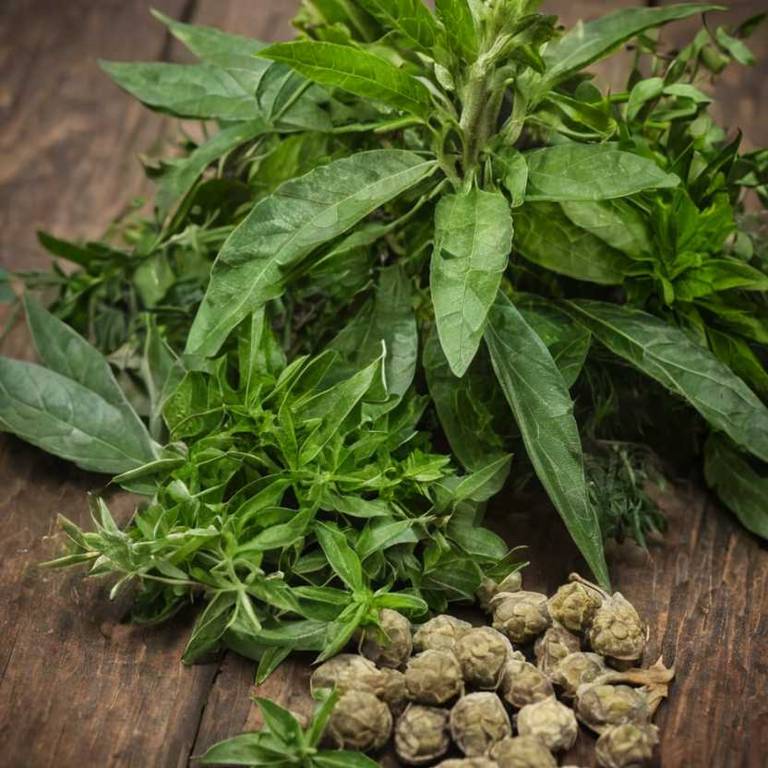By Leen Randell
Updated: Jul 21, 2024
10 Medicinal Constituents Of Annona Squamosa (Custard Apple)

Annona squamosa has active constituents such as annonaceous acetogenins, flavonoids, and phenolic compounds.
These constituents exhibit antimicrobial, anti-inflammatory, and antioxidant properties, which can improve wound healing, reduce fever, and prevent oxidative stress.
For instance, the antioxidant properties of custard apple can help prevent cell damage and age-related diseases, while its antimicrobial properties can help treat infections and promote a healthy gut microbiome.
This article explains in details the 10 best active constituents of Annona squamosa .
1. Acetogenins
Annona squamosa acetogenins is a class of bioactive compounds extracted from the seeds and leaves of the plant.
These acetogenins have been found to possess significant pharmacological properties, including antitumor, antioxidant, and antimicrobial activities.
Research has shown that they can inhibit the growth of cancer cells and may be effective in treating various diseases, making them a promising area of study in the field of natural product chemistry.
2. Tannins
Annona squamosa tannins is a group of compounds present in its bark and seeds.
These tannins have been found to exhibit significant antioxidant and antimicrobial properties, which may contribute to the fruit's traditional use in folk medicine for treating various ailments.
The tannins have also been shown to possess anti-inflammatory and antiviral activities, making them a potential source of new therapeutic agents.
3. Alkaloids
Annona squamosa alkaloids is a group of compounds extracted from its fruit and seeds.
These alkaloids have been studied for their potential pharmacological activities, including anti-inflammatory, antidiabetic, and anticancer properties. The main alkaloids present in Annona squamosa are anonaine, corossolamine, and cis-annonacin.
They have been shown to exhibit significant bioactivity and have potential applications in traditional medicine and pharmaceutical industries.
4. Flavonoids
Annona squamosa flavonoids is a class of bioactive compounds responsible for its pharmacological and nutritional properties.
These flavonoids have been identified in various parts of the plant, including the fruit, seeds, leaves, and roots.
They possess antioxidant, anti-inflammatory, and antimicrobial activities, which may contribute to the plant's traditional uses in folk medicine for treating various diseases, including diabetes, cancer, and respiratory disorders.
5. Phenolic acids
Annona squamosa phenolic acids is a group of bioactive compounds found in its fruit pulp and seeds.
These acids have been reported to exhibit numerous biological activities, including antioxidant, anti-inflammatory, antimicrobial, and anticancer properties.
Phenolic acids from Annona squamosa have been shown to inhibit the growth of pathogenic microorganisms and may also have potential in the prevention and treatment of various diseases, highlighting its importance as a valuable natural resource.
6. Sterols
Annona squamosa sterols is a type of plant-based sterol found in the seeds and pulp of the fruit.
It has been shown to possess various biological activities, including antioxidant, anti-inflammatory, and antimicrobial properties.
Sterols have also been found to exhibit potential therapeutic effects on cardiovascular disease, cancer, and neurodegenerative disorders, making it a promising area of research for pharmaceutical applications.
7. Glycosides
Annona squamosa glycosides is a type of compound derived from the fruit and seeds of the plant.
These glycosides have been found to exhibit a range of bioactive properties, including anti-inflammatory, antioxidant, and antifungal activities. They have also shown promise in traditional medicine for treating various health conditions, such as cancer, diabetes, and infectious diseases.
Further research is needed to fully understand their mechanisms of action and potential applications.
8. Anthraquinones
Annona squamosa anthraquinones is a group of bioactive compounds found in various parts of this plant.
These compounds have been extensively studied for their potential health benefits, including antioxidant, anti-inflammatory, and antimicrobial properties. Anthraquinones have also shown promise in the treatment of diseases such as cancer, diabetes, and bacterial infections.
Additionally, they have been used in traditional medicine to treat various ailments, including fever, rheumatism, and skin conditions.
9. Saponins
Annona squamosa saponins is a group of bioactive compounds extracted from its leaves and seeds.
These saponins have been found to exhibit significant antioxidant, anti-inflammatory, and antimicrobial properties, making them potential therapeutic agents for various diseases.
In addition, they have been shown to inhibit the growth of certain cancer cell lines, suggesting their role in cancer prevention.
10. Sesquiterpenes
Annona squamosa sesquiterpenes is a class of bioactive compounds found in the plant's fruits, leaves, and seeds.
These compounds have been extensively studied for their potential medicinal properties, including anti-inflammatory, antioxidant, and antiproliferative activities.
Sesquiterpenes from Annona squamosa have been shown to exhibit significant cytotoxicity against various cancer cell lines, making them a promising area of research in the development of novel anticancer therapies.